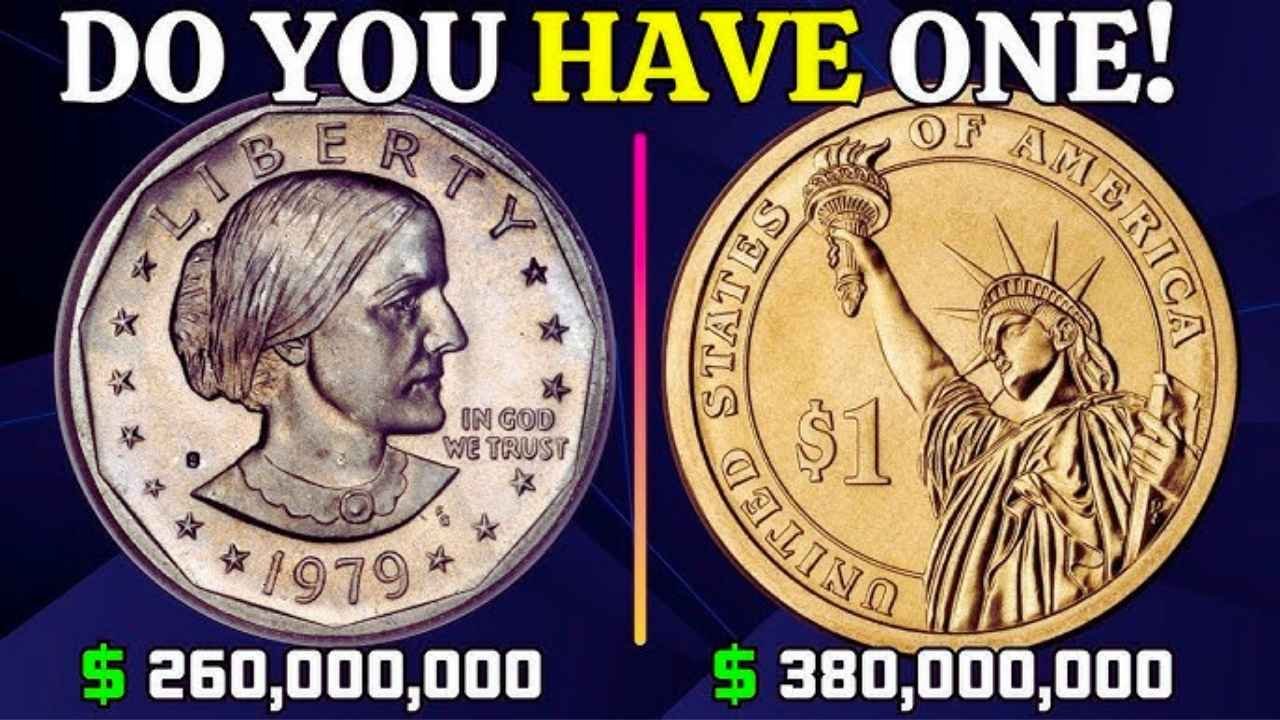Ever wondered if that $1 coin in your change could be worth millions? Gold Dollar coins from the 1800s and Sacagawea dollars from 2000 onward might look ordinary, but some are incredibly rare and valuable. These coins, tied to American history, are a collector’s dream. From minting errors to limited editions, certain $1 coins can fetch big bucks. Here’s how to spot the ones that could make you rich.
Why These Coins Are Special
Gold Dollar coins, minted from 1849 to 1889, were America’s first $1 coins, made of real gold and smaller than a dime. Sacagawea dollars, starting in 2000, feature the Native American guide who helped Lewis and Clark. Both have rare versions due to low mintage, errors, or unique designs. Collectors pay thousands or even millions for these, especially if they’re in great condition. Checking your coins could uncover a hidden gem.
Rare Gold Dollar Coins to Hunt For
Here are three Gold Dollar coins that could be worth a fortune:
- 1849-C Open Wreath: Only a few were made in Charlotte with an open wreath on the back. One sold for over $1 million.
- 1854-D Type 2: This Dahlonega-minted coin is rare due to its unique design and low production. It can fetch $500,000 or more.
- 1861-D Confederate Issue: Minted by the Confederacy during the Civil War, only a handful exist. They’re valued at up to $1.5 million.
| Coin | Year | Estimated Value |
|---|---|---|
| 1849-C Open Wreath | 1849 | Up to $1 million |
| 1861-D Confederate | 1861 | Up to $1.5 million |
Rare Sacagawea Dollars to Spot
Here are three Sacagawea dollars that collectors crave:
- 2000-P Cheerios Dollar: Some were included in Cheerios boxes with a special eagle design. These can sell for $25,000 or more.
- 2000-W Gold Sacagawea: A few were struck in 22-karat gold for a special set. One sold for $1.2 million.
- 2014-D Mule Error: A rare error where the coin has the wrong reverse design. These are worth up to $100,000.
| Coin | Year | Estimated Value |
|---|---|---|
| 2000-P Cheerios | 2000 | Up to $25,000 |
| 2000-W Gold | 2000 | Up to $1.2 million |
How to Identify These Coins
To find a valuable $1 coin, check these details:
- Look at the mint mark: A “C” or “D” on Gold Dollars, or “P,” “D,” or “W” on Sacagawea coins, can point to rarity.
- Check the design: For Gold Dollars, look for unique wreath or type variations. For Sacagawea, a special eagle or gold color is key.
- Inspect the condition: Coins with no wear or scratches are worth more. Handle them carefully to keep them pristine.
- Verify the year: Focus on 1849, 1854, or 1861 for Gold Dollars, and 2000 or 2014 for Sacagawea coins.
What to Do If You Find One
If you think you’ve got a rare coin, don’t spend it. Store it in a clean, dry holder to protect it. Take it to a professional grader like PCGS or NGC to confirm its authenticity and condition. They’ll give it a grade that can boost its value. You can sell through auction houses like Stack’s Bowers, online platforms like eBay, or trusted coin dealers. A 2000-W Gold Sacagawea sold for $1.4 million recently, showing the huge potential.
Start Your Coin Hunt Now
Gold Dollar and Sacagawea coins are still out there, hiding in change, old collections, or even cereal box promotions. With values reaching millions, it’s worth checking any $1 coins you have. A single coin could change your life. So, grab your magnifying glass, look for those rare years and marks, and you might just find a tiny treasure worth a massive fortune.
